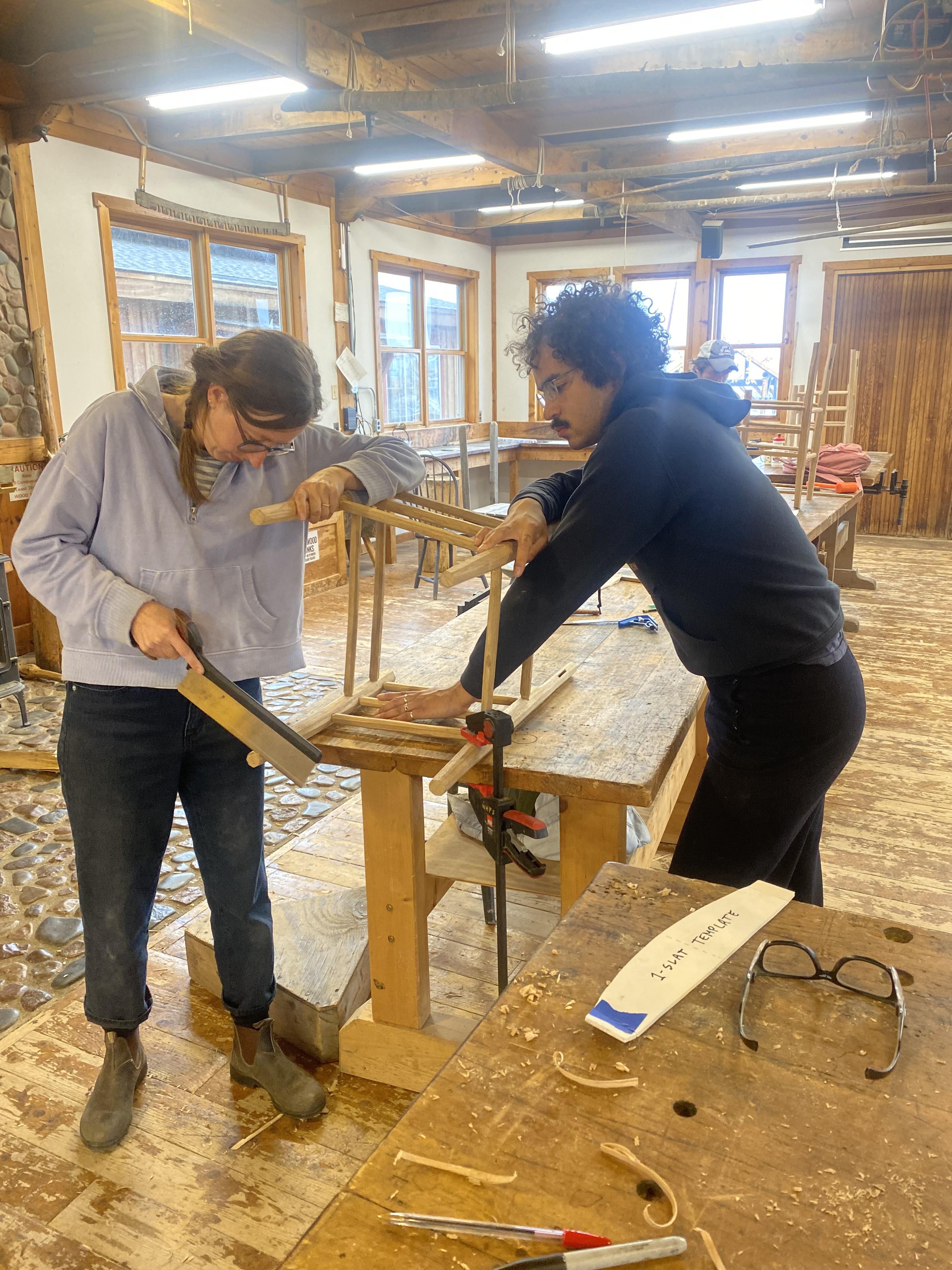
Meet Gabe Strand
Meet Gabe, one of our new Resident Artisans in the Artisan Development Program! In his first post, Gabe writes about teaching a chairmaking class and the cooperative support in folk school learning.
Hello! I’m Gabe, a chairmaker and woodcraft educator from the Pacific Northwest, via Southern Appalachia, now residing in Grand Marais, MN as a participant in North House Folk School’s Artisan Development Program. If that geography soup is hard to parse out, welcome to craft in post-pandemic America!
Maybe the best way to introduce my approach to woodcraft and its constellation of tools and techniques is to give you a short debrief of a class I was invited to teach at North House this past weekend. Six students gathered in the Red Building on campus to build post-and-rung ladderback chairs, a staple of Appalachian greenwood furniture dating back to the earliest settlers. These self-reliant mountaineers needed strong, lightweight seating that could be made quickly from abundant local materials with hand tools. As it so happens, self-reliant modern-day folks in urban Midwest cities have the same needs!

In the context of a woodcraft class in the Folk School tradition, this project had the ideal parameters. We focused first on intentional, efficient, and artful drawknife technique. This invited students to test the limits of this indispensable chairmaking tool and find their own learning edge. We practiced accurate planning and layout, which meant the students took responsibility for visualizing the next steps and knowing the details of the object they were working to create piece by piece. As we progressed, students developed nuanced understandings of wood grain (we used white oak), moisture differential, and wood compression. They incorporated this into the decisions they made while cutting chair joinery and assembling their parts.

Throughout the four-day class, students had opportunities to reflect on how existing skills from other parts of their lives could be brought to bear in our classroom, and I witnessed so many moments of cooperative support and critical thinking while embracing play as they built hand-eye coordination and tool control while drilling, shaping, and fitting their parts. On Sunday morning, I sat next to the glowing woodstove as six budding chairmakers carefully transferred measurements, adjusted angles, rotated parts into the correct orientations, and confidently drilled the final, critical mortises into chair legs they had taken great pains to hand-shape over the past few days.
.jpg)
As they collectively worked to assemble their chairs, I knew that the outcome I most treasure in teaching woodcraft would come to be. These students had faced any hesitations they held around their woodworking potential, replacing them with hands-on understanding and embodied craft skill. They will show someone their chair and describe each process used to build it—a moment that is hopefully less and less rare as our culture chooses to embrace craft as a critical ember of human experience.